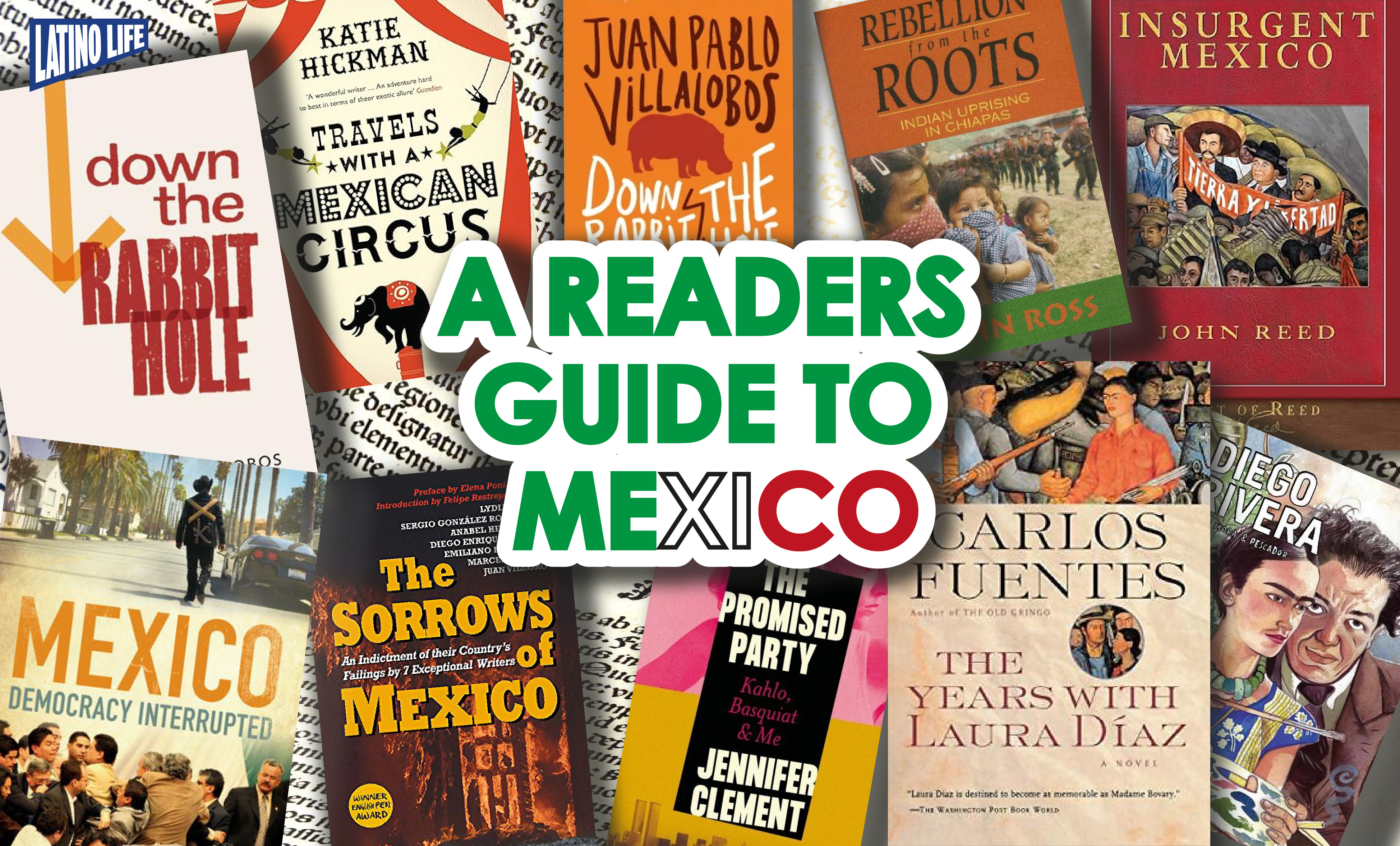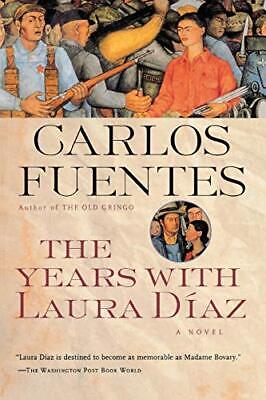 'The Years With Laura Díaz' by Carlos Fuentes (1999), translated by Alfred MacAdam
'The Years With Laura Díaz' by Carlos Fuentes (1999), translated by Alfred MacAdam
Fuentes' epic novel uses one extraordinary woman’s life and loves to sweep through 100 years of Mexican history. Laura Díaz – daughter, sister, wife, mother, lover – comes of age during the long, bloody Mexican revolution in the early 20th century. The execution of her half-brother Santiago (one of four generations of Santiagos in the novel) by firing squad at the start of the revolution launches her political journey. Laura witnesses, chronicles, discusses or participates in all of the country’s seminal political and cultural events of the 20th century, through to the early 1970s. Real-life luminaries such as artists Diego Rivera and his wife Frida Kahlo are also woven into the rich tapestry ofLaura’s life.
Fuentes’s grand project encompasses Mexico’s political upheavals, its union movement, the Spanish civil war, the Holocaust, McCarthyism and the massacre of students in Mexico City on the eve of the 1968 Olympics (Laura’s grandson, another Santiago, is one of the victims). Its intelligence, emotional power and bold ambition make this a memorable book.
 'Down the Rabbit Hole' by Juan Pablo Villalobos (2011), translated by Rosalind Harvey
'Down the Rabbit Hole' by Juan Pablo Villalobos (2011), translated by Rosalind Harvey
In Villalobos’s small but perfectly formed debut novel, reality and surreality entwine in a darkly comic tale that offers a fresh take on Mexico’s nasty narco-wars.
Tochtli (“rabbit” in the indigenous Nahuatl language), the precocious, seven-year-old narrator, tells us about his life as the son of a drug kingpin called Yolcaut (“rattlesnake” in Nahuatl). They live in an isolated and well-guarded palace (“the thing is we have a lot of money. A huge amount”), where the boy’s every whim is indulged, but he is lonely. He knows only “13 or 14 people ... [But] if I counted dead people, I’d know more”.
He has a passion for hats, samurai, guillotines – and Liberian pygmy hippopotamuses. Tochtli reads the dictionary every night, and among the words he likes to use are “pathetic”, “devastating”, “disastrous” and “sordid”. His father doesn’t shield Tochtli from the brutality of the drug world, resulting in the child being chillingly well-versed in matters relating to bullets, knives and getting rid of dead bodies. “I think at the moment my life is a little bit sordid. Or pathetic,” he says.
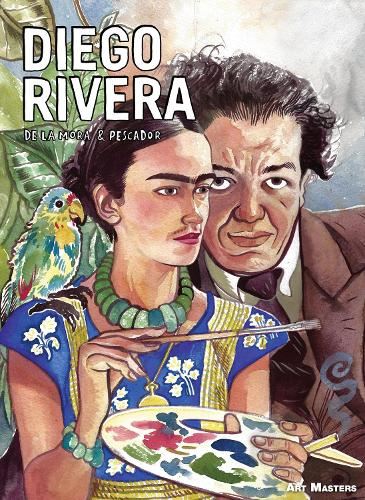 Diego Rivera : A Graphic Novel (2021) By De la Mora and Pescador, Translated by Lawrence Schimel, Published by Self Made Hero
Diego Rivera : A Graphic Novel (2021) By De la Mora and Pescador, Translated by Lawrence Schimel, Published by Self Made Hero
Sooner or later – either because you may have seen or are planning to learn about his many works which range from vast murals to more intimate sketches and prints - you'll want to know something about Diego Rivera, the best known of the 'Tres Grandes' – the three greats of Mexican Muralism in the twentieth century.
This graphic novel is an incredibly accessible (and salacious) introduction to the life and times of the man who was once feted around the world but whose fame has since been eclipsed by that of his wife, artist Frida Kahlo.
Mexico-based Jose Luis Pescador's illustrations capture not only the physicality of Rivera but whisk the reader through his earliest days, his travels (and travails) in Europe where his eldest daughter was born, to his life with Lupe Marin and eventually Kahlo – all the while causing polemic wherever he pitched up his easel or scaffold. The pages showing Mexico City in all its early 20th century splendour and Rivera's large scale artworks are especially engaging.
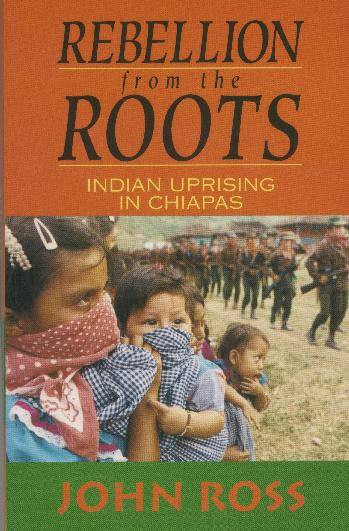 Rebellion In The Roots (1995) By John Ross Published by Common Courage Press
Rebellion In The Roots (1995) By John Ross Published by Common Courage Press
Though John Ross was born in the USA he was an avowed pacifist – and one of the first people to go to jail for refusing the draft. He first ventured to Mexico in the 1950s, becoming an authority on progressive movements – and on the Ejercito Zapatista de Liberación Nacional which surged into public consciousness on January 1st 1994.
This book – the first to explain the movement in English is a seminal work for anyone looking to understand what happened in the southern state of Chiapas on the day the infamous NAFTA trade agreement came into force.
Ross always wrote as he saw and doesn't shy away from his self-appointed role as a critical friend. Few journalists at that time had such good contacts or bothered to speak meaningfully with the indigenous population.
Tragically, 30 years on, Chiapas – which has seen thousands of migrants pass through its thickly forested mountains on the way from central and South America towards the US - remains a highly volatile state.
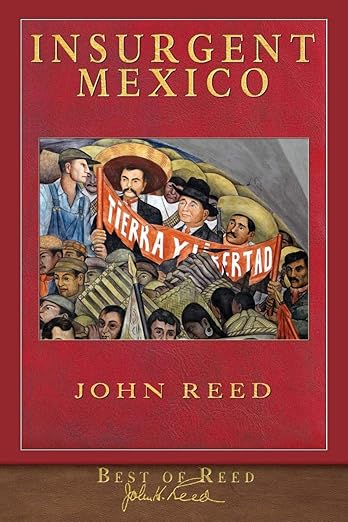 INSURGENT MEXICO (1914) By John Reed Published by Penguin
INSURGENT MEXICO (1914) By John Reed Published by Penguin
Lovers of Mexican history will not mind another work by another US-born observer with the initials JR. Reed was a complex and less reliable witness than Ross but this slim volume is a fitting companion to Ross's later work and, read together they bookend a century of revolution and reform.
Reed pioneered the concept of an embedded reporter – spending months with guerrillas allied to Pancho Villa who commanded forces from the north of Mexico.
Reed revels in the drama but there is plenty of light and shade and his observations and exchanges shone a light on the desperate situation faced by so many struggled to survive during the rule of Porfirio Díaz.
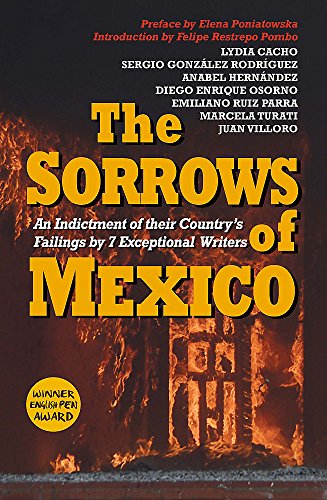 THE SORROWS OF MEXICO (2016) Collected writings by Lydia Cacho et al Published by Maclehose Press
THE SORROWS OF MEXICO (2016) Collected writings by Lydia Cacho et al Published by Maclehose Press
Available in both Spanish and English this anthology fizzes with outrage , coming out as it did at a particularly dangerous time for Mexican journalists and human rights defenders.
Lydia Cacho, known for her no holds barred reporting – on child trafficking and violence against women and who was herself the victim of a terrible revenge crime ordered by those whose appalling deeds she had exposed – shares harrowing extracts from her notebooks and Anabel Hernandez who has covered the forced disappearances of the students of the Ayotzinapa Teacher Training College for almost a decade reconstructs the fateful night of September 26th 2014.
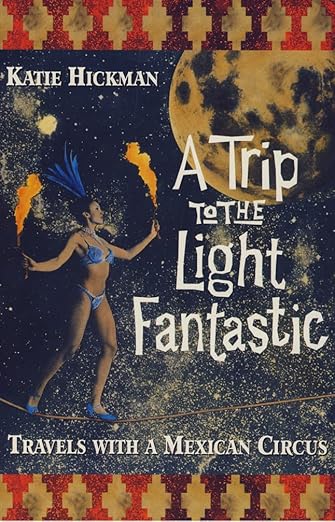 A TRIP THROUGH THE LIGHT FANTASTIC : Travels with a Mexican Circus (1993) By Katie Hickman
A TRIP THROUGH THE LIGHT FANTASTIC : Travels with a Mexican Circus (1993) By Katie Hickman
If the thought of Mexico's heavy history is too much for you, this is the book that will – at times – make your heart soar. But be warned, there is still tragedy and broken hearts and spangles trampled in the dust. But there are also elephants and chisme (gossip) and an insight into a little-known facet of life that hardly exists anymore.
Hickman's eye for detail – and her empathy – is at the heart of the story of the year she and her then husband ran away with the circus.
 THE PROMISED PARTY (2022) by Jennifer Clement
THE PROMISED PARTY (2022) by Jennifer Clement
Clement, the former director of the press freedom organisation PEN moved to Mexico when she was 10 years old. She came to prominence with her first novel, A True Story Based On Lies – the tale of a maid who works for a wealthy Mexican family – which was followed with a number of other fiction and non fiction works, all of which bear reading in English or Spanish. Her masterpiece however is her most recent work, a memoir so beautifully observed that I sometimes had to stop reading and catch my breath. At other times, when the names are dropping like petals – the evocations of places seem so familiar, it is impossible to stop drinking in the essence of what Mexico City must have been like in the 1970s and 80s. With friends and acquaintances straddling the worlds of literature and art there is something for everyone – even though there are some dark corners hidden in plain sight.
 Mexico: Democracy Interrupted by Jo Tuckman (2012)
Mexico: Democracy Interrupted by Jo Tuckman (2012)
In her well-informed overview of Mexico today, Tuckman argues that the country missed a chance to fully embrace democracy after the oxymoronic Institutional Revolutionary party (PRI) was voted out in 2000 following 70 years in power.
The rightwing National Action party (PAN), in its subsequent 12 years of running the country, failed to deliver on the hopes it had raised for more transparent and participatory governance, beyond political plurality and generally free and fair elections.
Tuckman investigates the key factors of Mexican life and the challenges the country faces: a savagely violent drugs war (and the US role in it); a flawed judicial system; rampant corruption; poverty and extreme inequality; racism; and environmental degradation. She also examines the infighting that has stymied the ambitions of the left (although a centre-left candidate won the 2018 presidential election), as well as the role played by the church.
History, personal stories and political analysis are interwoven to reveal what makes this fascinating and diverse country tick. Despite some seemingly intractable problems, she sees reasons to be optimistic, with brave, spirited citizens and sections of the media stepping up to do battle for a better future.
For more info on great books to read from around the world visit Read the World


